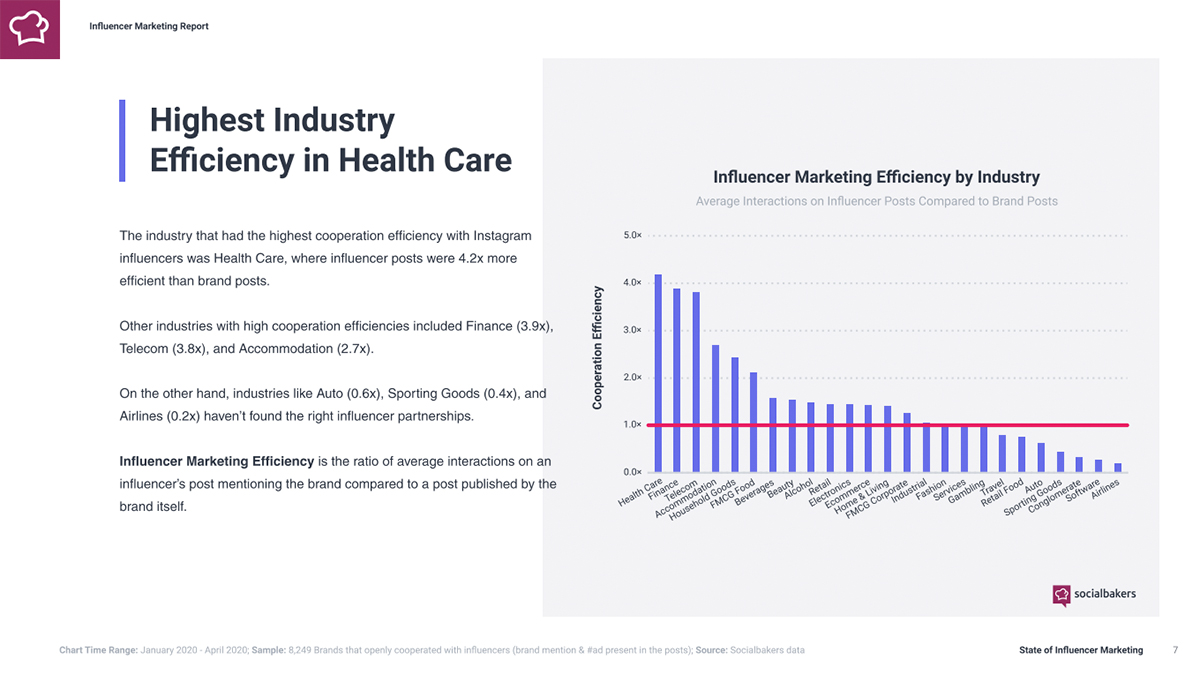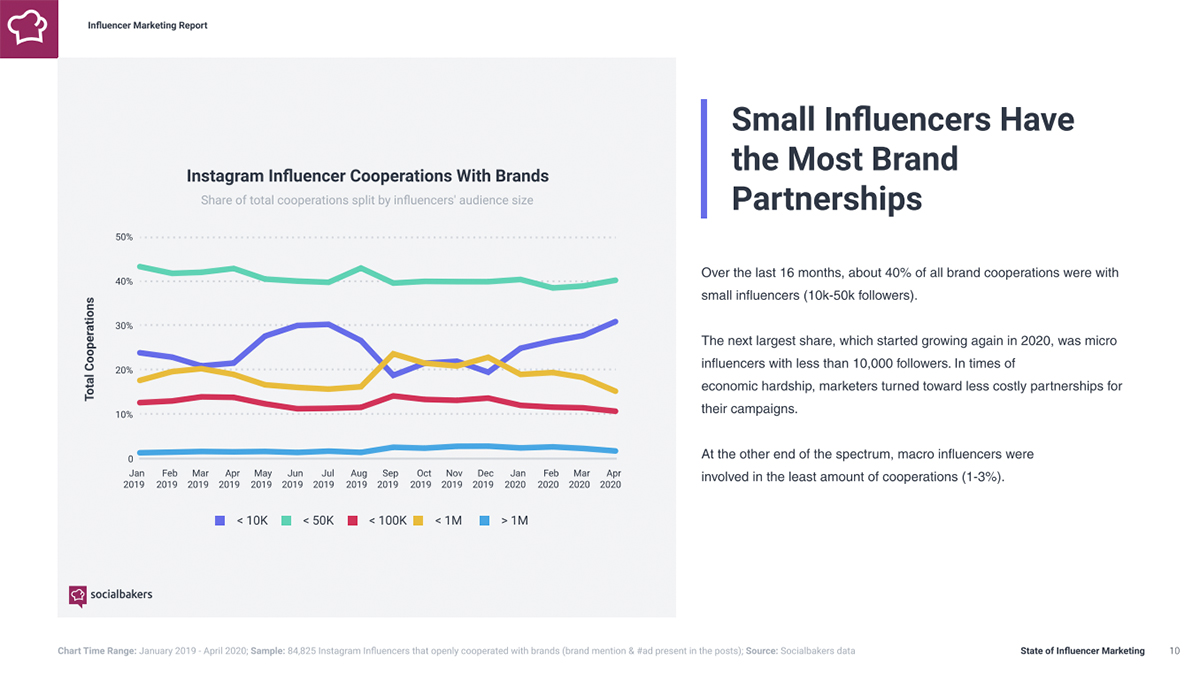How Covid-19 is changing influencer marketing investment
Socialbakers has examined the impact of Covid-19 on the influencer industry within the last three months in the "State of Influencer Marketing" report. The results show that despite the economic impact of the pandemic, influencer marketing is not dead, and is primarily focused on nano- and micro-influencers who occupy thematic niches with their content.

- Despite the economic impact of Covid-19, brands are still investing in influencer marketing, but with a significantly different approach.
- Influencer marketing effectiveness fell by 41 percent year-on-year, whereas influencers from the healthcare category were particularly successful, with a factor of 4.2x
The report's findings show, among other things, a decline in brand-sponsored content and greater collaboration with nano- and micro-influencers who occupy thematic niches with their content. These may offer greater value to brands with tighter marketing budgets. In the coming months, the business with influencers could increase even more, as brands are constantly looking for solutions to engage effectively and authentically with their target audience.
"Despite the economic impact of COVID-19, brands are still investing in influencer marketing to reach their target audiences, but with a significantly different approach," said Yuval Ben-Itzhak, CEO of Socialbakers. "Nano- and micro-influencers are now seen as high-value resources that can make a big impact without the high price tag of macro- and mega-influencers. As budgets remain tight, smart brands will likely continue to expand partnerships with smaller influencers as part of a smart social media strategy as the global pandemic continues."
Influencer marketing scaled back due to tight budgets
Socialbakers' data shows that both the amount of sponsored content on Instagram and the number of brands collaborating with influencers have decreased significantly compared to last year. The number of Instagram influencers who used the hashtag #ad on the occasion of a collaboration with brands dropped by 30 percent in April 2020 compared to April 2019. This is the lowest figure since August 2019, and this sharp decline may be due to the global pandemic. At the same time, the number of brands on Instagram engaging with influencers dropped 37 percent in April 2020 compared to April 2019.

Influencer efficiency declines, small brands gain momentum
There was also a sharp drop in influencer marketing efficiency, which is the ratio of average interactions on an influencer post mentioning the brand compared to a post published by the brand itself. In April 2020, influencer marketing efficiency dropped 41 percent compared to April 2019, reaching its lowest level since at least January 2019. After this metric went up and down during the holiday season, efficiency decreased again in the spring, likely due to the pandemic.

Industries with high influencer marketing effectiveness included healthcare (4.2X), finance (3.9X), telecommunications (3.8X), and lodging (2.7X). At the other end of the spectrum, industries such as automotive (0.6X), sporting goods (0.4x) and airlines (0.2x) were unable to establish effective influencer partnerships. Small brands in particular seem to be the big winners when it comes to influencer marketing. They achieved the highest efficiency with their influencer campaigns and the collaboration with small and also larger influencers.

Less costly campaigns, smaller influencers
While brands have to cope with tighter marketing budgets, Socialbakers' data shows that more is being invested in influencers with a smaller reach. In the last 16 months, about 40 percent of all partnerships analyzed were with micro-influencers. Micro-influencers with less than 10,000 followers account for the next largest share, which has started to grow again since 2020. In contrast, mega-influencers were involved in the fewest brand partnerships, with 1 to 3 percent.

In April 2020, 33.3 percent of all Instagram influencers who collaborated with brands were nano-influencers, and 31.9 percent of all #ad posts were also from nano-influencers. This is the highest percentage there has been since June 2019. Of all brand collaborations analyzed by Socialbakers, nearly 94 percent were micro-influencers with less than 100,000 followers. This highlights brands' belief that positive campaign results can be achieved with smaller, more authentic influencers who are closer to their actual audience.









